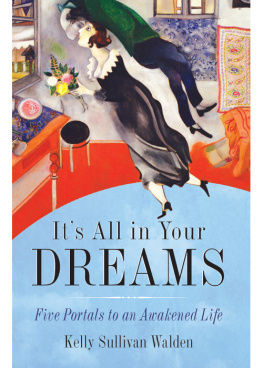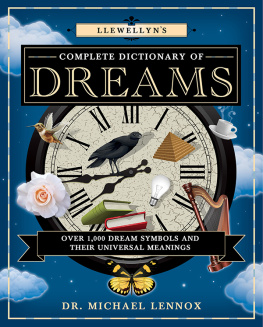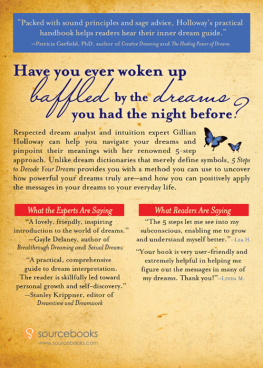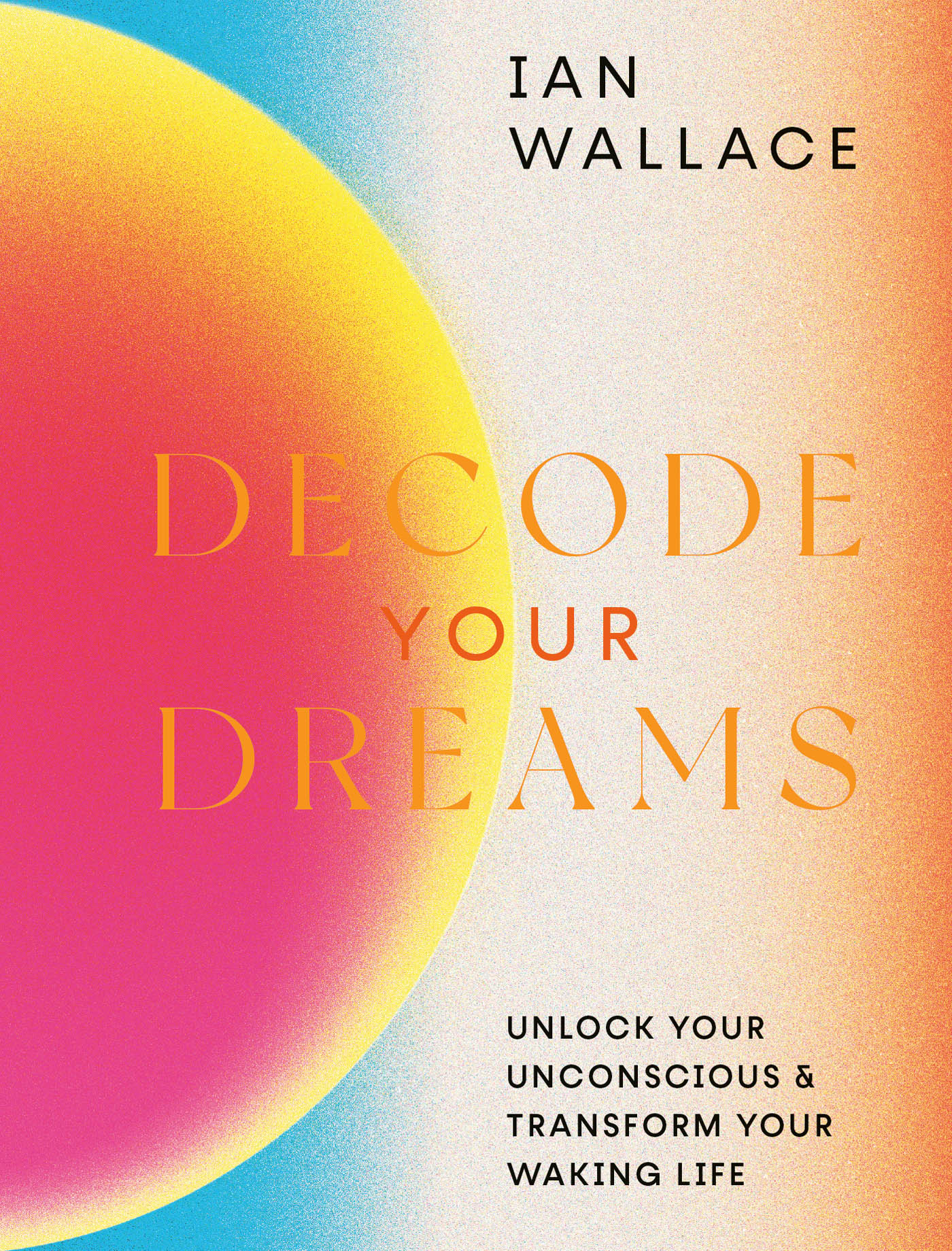Contents
Page List
Guide
Cover
IAN WALLACE
DECODE
YOUR
DREAMS
UNLOCK YOUR UNCONSCIOUS & TRANSFORM YOUR WAKING LIFE

TABLE OF CONTENTS
INTRODUCTION
For as long as humans have been dreaming, our dreams have been regarded as some largely indecipherable code. Various types of code-breaker emerged throughout the centuries of human existence. To begin with, they were fortune tellers and mystical seers, decoding what were generally considered to be messages from the gods. As human knowledge and understanding grew, more scientific methods were applied to the process of dream deciphering. In this approach, the human brain was considered to be a machine running code. The enigma of the dreaming brain was seen as a type of mechanistic computing engine and subsequently as an electronic computer.
The challenge with using the mystical or mechanistic approaches is that they are both largely ineffective in decoding the meaning of a dream. Both approaches make the assumption that dreaming is a passive process, with the dreamer simply observing what might be some etheric vibrations or random electrical brain noise. Towards the end of the twentieth century, more sophisticated brain-imaging techniques demonstrated that a dream was not just something that happened to you. In fact, the reverse was true. You actually happen to your dreams in the sense that you actively create everything that you experience in them.
The discovery that dreams are actively created with purpose and intention led to the realization that the person who might be trying to decode the dream is also the person who encoded it in the first place. Imaging studies had shown that specific areas of the brain were actively involved in creating a dream.
These areas included those concerned with emotional processing, need fulfilment, story generation and memory formation. Memories are experiences that hold meaning for you, so when you create a dream, you are encoding a meaningful story about how to fulfil your emotional needs in waking life.
Our word code is derived from the word codex, originally meaning a significant and valuable book. The stories that you encode in your dreams are not just one-off events. They are your natural way of creating your own living book of who you are. The living book that you author in your dreams is not written in words. You tell it in vivid imagery and heartfelt emotions. You update that book of who you are every time you dream, and as you do so you are not just processing experiences of who you have been, but are also imagining the possibilities of who you can become.
Dreams are no longer some largely indecipherable code, and as you are the person encoding your dreams, you are the best person to decode them. In this book, you can learn how to decode your night-time dreams so that you can use that information to reflect on and resolve dilemmas, identify and release tensions, as well as to make your best dreams come true in your waking life.
In the first part, The Power of Dreams, we explore the dreaming process and become more familiar with the significance and importance of dreams. This will help you to understand what dreams are, why we dream and what dreams mean. We also look at the difference between dreams and reality, and the fundamental link between dreams and emotions.
Next, we explore a range of universal dream themes and how to apply information from those themes to specific situations in your day-to-day life. It may seem as if using your dreams is a huge challenge because dream content is manifold, with billions and billions of variations. Happily, because we are all human beings and share many common behavioural patterns, we tend to create similar dream patterns and themes. Working with these dream themes is a useful way to make sense of the dreams that you create.
For each of the universal themes, there are a number of common dreams described. This book is not intended as a comprehensive dictionary. Instead, it is simply demonstrating the process of dream decoding by using examples that may be familiar to you. Each dream description provides a meaning for the dream, a waking-life action that corresponds to the dream and a question or prompt to help you put your dream into action. As you decode your dreams and understand what they mean, you will have the opportunity to turn the dreams that you create into positive and healthy action.
In Further Dreamwork, I then share some practical exercises for actively engaging with the dream imagery that you create, so that you can reconnect with its power and explore its potential in more depth. Lastly, we explore ways of turning your dreams into action in Make Your Dreams Come True, looking at how you can remember your dreams, what influences your dreams and how you can choose what happens in your dreams through lucid dreaming.
THE POWER OF DREAMS
Dreams can appear like fleeting, half-glimpsed experiences that have no real application in day-to-day life. Our dreams have the power to move us, to unsettle us, to inspire us, but using that power in waking life may seem a challenge. Understanding why you create the dreams that you do, however, naturally develops your human superpowers of self-awareness and situational awareness. The more aware you are of who you want to become and where you want to go in life, the more likely you are to succeed in doing so and dreams are a doorway to doing just that.
We All Dream
Every human being dreams: every human being alive today, every human being who ever lived and every human being who will ever live. We humans have been fascinated by dreams since we first began communicating them and sharing them with each other.
The first written dream diaries date from more than 5,000 years ago in Nineveh on the banks of the Tigris, an ancient Assyrian city that forms part of modern-day Iraq. Dream dictionaries began to emerge around 2,000 years ago in ancient Greece and our fascination with dreams and the dreaming process continues into the twenty-first century.
Many misconceptions and superstitions about dreams have accumulated over those tens of thousands of years. Dreams were considered to be messages from the gods, communicating vital information if only we could work out what the messages meant. This belief deemed human beings as some type of psychic receiver that was tuning into the realm of the gods, who were actively sending out messages to be passively received by the dreaming humans.
During the twentieth century, equipment for measuring electrical activity in the brain became more widely available. As a result, scientists began to oppose the belief that dreams were messages from the gods, and instead proposed that dreams did not mean anything and were just random electrical activity in the brain.














